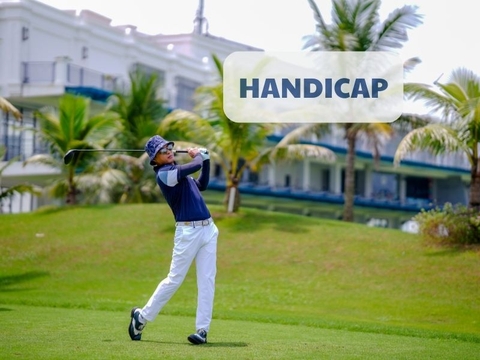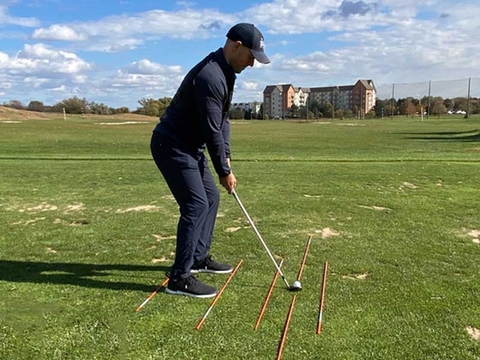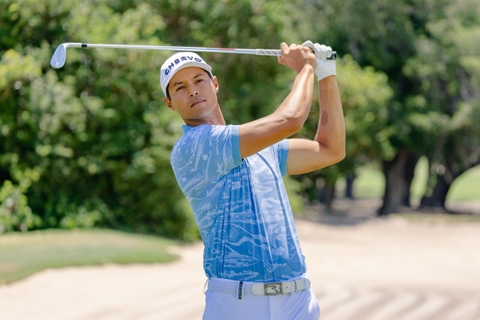-
-
-
Total:
-

Common situations when playing a provisional ball
The provisional ball rule is one of the most helpful rules in golf. If you think your ball might be lost after a shot, you should play a provisional ball. This rule is designed to save time, but there are specific regulations regarding provisional balls that you should be aware of. Let's explore some real-life scenarios.
- The player hit their tee shot into deep rough, where it's likely to be lost. They announced this and played a provisional ball onto the fairway. The player later found their original ball in a difficult lie in the rough.
A: Can the player decide that the original ball is unplayable and continue playing the provisional ball from the fairway, making the next shot their fourth stroke? Answer: No. If the original ball is found on the course, the provisional ball must be abandoned (Rule 18.3c(3)). If the player decides the original ball is unplayable, they may take relief under Rule 19 (play another ball from the teeing area; take relief on a direct line behind; take lateral relief: drop the ball within two club-lengths of the original spot, no nearer the hole).
B: If a player, due to a misunderstanding of the rules, declares their original ball unplayable and hits the provisional ball from the fairway onto the green, then finishes the hole, what is the ruling?
Answer: According to Rule 18.3c(3), once the original ball is found, the provisional ball must be abandoned and is considered a wrong ball. As the player has played a wrong ball, they incur a general penalty (two strokes in stroke play and loss of hole in match play) and must rectify their mistake before starting the next hole (take relief from the rough for the original ball and play it to the hole).
- On a par-3 hole, the player hits their tee shot right into a wooded area. They announce a lost ball and play a provisional ball that lands very close to the hole. If they continue playing the provisional ball, they are guaranteed a bogey.
A: Can a player declare their original ball lost and continue playing the provisional ball to make a bogey on that hole?
Answer: No. A player cannot simply declare their original ball lost. A ball is only considered lost if it has not been found within three minutes of the player or their caddie beginning the search (Rule 18.2a or the definition of “Lost Ball”). However, a player may choose not to search for the original ball and continue play with the provisional ball. The player may also ask their playing partners not to search for their original ball. If a player hits the provisional ball (intentionally or unintentionally) from a position nearer the hole than the estimated position of the original ball, the provisional ball becomes the ball in play and the original ball is lost.
B: A player chooses not to search for their original ball. While walking from the teeing area to the green to play their provisional ball, a fellow player finds the original ball in a bush within the general area, within three minutes of the player leaving the teeing area. Can the player continue to play the provisional ball?
Answer: No Even though a player may ask their playing partners not to search for their ball, playing partners are still allowed to search. If the ball is found within the allotted time before it is considered lost and before the player plays the provisional ball from a position nearer the hole, the found ball becomes the player's ball in play, and the provisional ball must be abandoned. The player must then continue play with the found ball (Rule 18.3c(3)).
C: If a player hits a hole-in-one with a provisional ball from the teeing ground, what is the player's score for that hole?
Answer: In this scenario, the provisional ball becomes the ball in play once the player lifts it from the hole and the original ball has not yet been found on the course. Therefore, the player's score for the hole will depend on the timing of when the player lifts the ball from the hole. If the player reaches the hole and lifts the ball from the hole before the original ball is found on the course, the player's score for that hole will be par (3 strokes). If the player's original ball is found on the course before the player reaches the hole and lifts the ball, the player must abandon the provisional ball and continue play with the original ball.
Shine on the golf course with high-class fashion style! ⛳️ Our latest men's golf fashion collection is designed specifically for sophisticated golfers, helping you confidently express your personality and enhance your performance. Premium materials, smart design, comfort in every movement. Order now to experience the difference!
Shine on the golf course with high-class fashion style. Check out our latest women's golf fashion collection!
Share:
 Vietnam
Vietnam
 English
English
 Korea
Korea
 China
China











